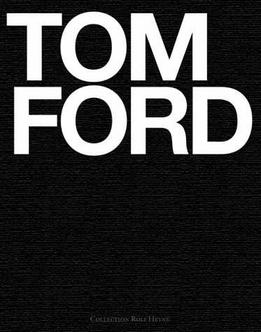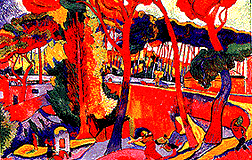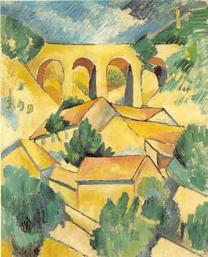Tom Ford Private Blend: An Overview {Perfume Review & Musings} {New Perfumes}

Tom Ford Private Blend by the Dozen
Perfume Reviews
Like the laying out of the 12 first steps of an Inca pyramid made of black onyx, we now have been offered the 12 building blocks of the Tom Ford fragrance house.
The 12 scents of the new line are called Amber Absolute, Noir de Noir, Velvet Gardenia, Black Violet, Tobacco Vanille, Oud Wood, Purple Patchouli, Bois Rouge, Moss Breches, Tuscan Leather, Neroli Portofino and Japan Noir.
The scents are described as perfumes constructed around a main note folded into secondary notes. In this manner and despite the richness of their textures, the perfumes are not particularly complex. They offer dense, heavily textured sensations most of the time, but not necessarily deep and multi-layered in the longer term. The notes themselves have a certain depth - they are fleshy, often opulent - but the structures of the perfumes are rather straightforward. Often one gets an opening stage as discrete as the blasting of a police siren on an empty Sunday morning street followed by some relinquishing, a renewed, often invasive presence, and then a clean-shaved impression of a drydown.
A line of continuity with Black Orchid is apparent as the concept of a sub-genre of dark tropical juices with slightly nefarious accents endures, meanders into new territories and draws a geographical map of Tom Ford's desires and obsessions.
"It's rare that I like a very light floral," he says. "I'm rarely drawn to roses, for example. I'm more a tuberose, gardenia, jasmine, sort of deeper, sort of heady ... heady ... heady...."...

The 12 Private Blend scents come in black apothecary bottles that seem inspired by the 19th century antique Guerlain flacons (cf. the black flacon for Jicky). Tom Ford explained that he wanted to launch 12 fragrances at a time because of the urgency he felt in setting up his own perfume house.
The standardization of the bottles will allow him to bring other building blocks to his fragrance house, as needed.
He also apparently wanted to be heard loud and clear, and leave a powerful trail behind him. The scents in the new line are anything but shy and coy. The line in general is bold, aggressive, and does not waste time on chiseling unnecessary nuances out of the fragrances.
Because Tom Ford likes fast, the fragrances are constructed so as to make powerful first impressions in the top notes and middle notes, while calming down significantly in the drydowns. It is as if a big cat had shown its claws and then retracted them now feeling in the mood for a purr especially so as it got tired by the fierce demonstration of the beginning.
The fragrances make big statements; the collection could have been called "Intense" or "Extreme Ford" and it is in this respect that it is the most remarkable, since otherwise many of the TF fragrances can be traced back to other existing fragrances. This is not to imply that they are copies. It is not impossible that Ford likes scents that smell familiar because, for example, Amber Absolute is like a high-voltage version of Ambre Sultan by Serge Lutens - a scent that was very popular amongst the New York City designers' set - and Velvet Gardenia is like an amped up rendition of La Haie Fleurie du Hameau by L'Artisan Parfumeur.
It is as if Tom Ford thought "More is Better." Even the softer fragrances like Moss Brèches and Neroli Portofino (a twist on a classic cologne) cannot be called light or unassuming. The line takes therefore a contrapunctic approach to the mainstream market, which is usually criticized as being too bland and light - and in general elicit yawns from connoisseurs; it has at least become chic to yawn out of boredom at the string of oh-so-predictable releases.
The accords in this case may smell familiar, but the intensity betrays a revivalist character that was already apparent in Black Orchid with its references to old-Hollywood glamour. We can think of the famous use of Narcisse Noir by Caron on the film set of Sunset Boulevard by Billy Wilder (1950). It makes one feel on the whole like a risk has been taken and a core belief asserted.
The perfumes were composed by noses from IFF, Givaudan, Quest International and Firmenich. Private Blend, to some extent, is a by-product of Tom Ford's search for the right interpretation for his previous release, Black Orchid. As he kept looking, he put aside 20 fragrances that were interesting, but not what he wanted at the time. He then realized they could be used for a different project and came up with a shorter list still and kept 12 scents. Connections are obvious to the nose. Purple Patchouli in the new line for example smells like the fraternal twin sister of Black Orchid. It offers the same cheese-like indolic note in the beginning, the same orchid note, and the same overall dark tropical feel, except that it maintains a higher level of intensity than the one that tended to fade in Black Orchid's drydown - much to everyone's surprise then.
The collection appears to be a confluence of various historical trends as well as to reflect Tom Ford's personal taste in perfumes. He usually brings a forceful imprint to the fragrances he designs (see Gucci Eau de Parfum (2002) and Gucci Pour Homme (2003)) and this preference is manifest across the line of Private Blend, only made even more apparent.
One way to articulate the impression of forcefulness derived from the line is to relate it to the aesthetics of Fauvism and its links with cubism. Works of painters like André Derain and Georges Braque, as the painters evolved from fauvism to cubism, can help capture some of the sensibility of Private Blend. Just like fauvism was an intense reaction to the pastel colors and soft touches of impressionim, Tom Ford Private Blend is distancing itself from ethereal, lighter and softer perfumes; well, up to a point; to that point where Cubism is bold and simple still, but also makes use of soft colors.
The volumes and colors of the fragrances at first are daring, powerful, even strident at times. It makes one think of a concert of klaxons, hesitating between music and noise. In olfactory terms it translates into saying that some of the perfumes are so generously amped-up that they smell almost bad, walking a narrow line between still-harmonious aggressive notes and nauseabond ones.
Une Fleur de Cassie by Frederic Malle, for example, also walks that thin, murky line. Some people will find this interesting and some others will probably not be able to tolerate it well.
Another image one can come up with when trying to explain this sensation of willed excess is one of a person stepping on the gas to go faster and to drive harder. The perfumes unfold like that, as if someone were stepping on the gas of the perfume notes.
Private Blend seems to be like a 21st century house of Caron and to have retained the lessons of an Ernest Daltroff and a fragrance classic like Narcisse Noir. Those were the days when a perfume could be almost suffocating. Like the classic Carons, the scents here are unapologetically in-your-face. At the same time, it is clear that they belong to the 21st century and not the beginning of the 20th.
One can feel in the Private Blend collection the influences both of the power scents of the 1980s and the clean transparent ones of the 1990s. (Purple Patchouli is supposed to be a 60s scent.) Despite their love of blackness and darkness, there are unmistakable clean touches to the perfumes. The drydowns betray their contemporaneity, as the perfumes transform themselves into soft skin scents that smell a bit generically clean and good, at times; if they started like power sillage perfumes, they end up revealing a mindfulness of the public environment.
Like Les Exclusifs by Chanel (see Index of Perfume Reviews), they seem to share a common idea for the bases, that of a polite, politically centrist bottom notes. On a practical level, it means that one will be able to dab on some Private Blend in the privacy of one's home, let the Big Perfume rage for a while, and then step into the street with its softer side and incarnation.











Tobacco Vanille is the one i'd like to try. and i wonder are they unisex or particular?
Well, Tom Ford managed to say that they are both unisex and gender-specific, sort of. The scents are unisex in principle, but then he also added that 6 were more on the masculine side and 6 on the feminine side:)
Bonjour, ma belle-
I've got to say that I liked several of these much more than I thought I would, and a few strike me as impressive.
For example, on trial, I was amazed at the authenticity of the Velvet Gardenia- and I'm NOT a Southern belle ! It smelled exactly like a plant in first bloom.
I llok forward to more of your thoughts...
I always do.
Bonjour Ida,
The two I liked spontaneously the most at first were Amber Absolute and Oud Wood. Especially Amber Absolute is a Wow kind of amber.
I agree that they do offer an impressive character, but as if they meant to impress you on purpose. They're a tad show off in my opinion.
When I tried Velvet Gardenia on I kept thinking that it smelled like another perfume I knew, only stronger. I realized it was La Haie. It picks up on that same type of indolic accord. Of course, as you point out, it might be because it recreates the original ingredient very well. So the line would be quite a bit about the "matière", the raw material, over the artistic, more unpredictable composition.
The drydowns can smell awfully good but they are not particularly deep and have a little bit of a functional clean character about them that feels rather pragmatic.
Bonjour MH,
I've yet to smell these and don't know that I will - where does one find them in Paris? I haven't investigated... Your analysis is very interesting and I especially like your remark about the base being "functional" and "pragmatic". I actually believe that's what Ford is about: flamboyant, sexy attitude on the surface, hard-nosed businessman deep-down...
Bonjour D
A quick search on the Tom Ford site retrieved the address of the Galeries Lafayette, 40 Bd Haussmann.
It is interesting that what I said about the perfumes concurs with your take on Tom Ford's personality. I do not follow him much, but I am starting to get a feel for his character through his perfumes.
The flamboyant aspect of his perfumes seems very much tied into the wish to make an immediate strong impression on the customers. They are very dramatic in this respect. It calls to mind his former training and career as an actor. It makes me think of the kind of charismatic energy that actors have to have to make a credible impression on spectators. He pushes it in the direction of "I have 2-5 minutes to convince you that I am great." It could have something to do with his experience as an actor for commercials. At any rate, I do not doubt his interest for the business side of his work:)